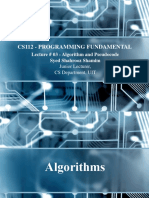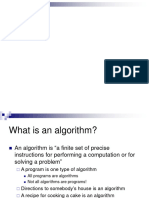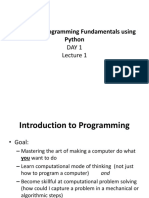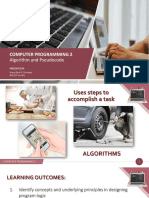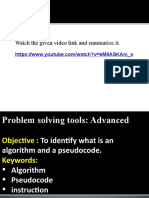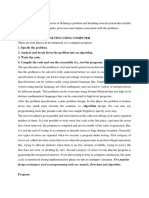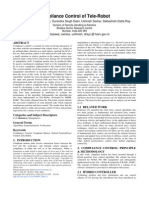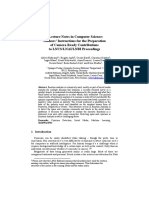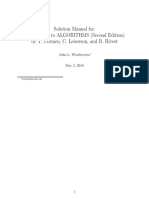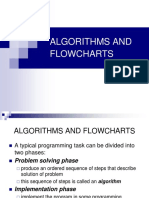0% found this document useful (0 votes)
18 views48 pagesAlgorithm (2210 Comp Sci)
The document provides an overview of algorithms and pseudocode, defining algorithms as a set of unambiguous instructions for solving problems. It discusses the properties of algorithms, such as finiteness and effectiveness, and explains how to express algorithms using various notations, including pseudocode. Additionally, it outlines the structure and rules for writing pseudocode, highlighting its advantages and limitations.
Uploaded by
punjwanizinniaCopyright
© © All Rights Reserved
We take content rights seriously. If you suspect this is your content, claim it here.
Available Formats
Download as PPTX, PDF, TXT or read online on Scribd
0% found this document useful (0 votes)
18 views48 pagesAlgorithm (2210 Comp Sci)
The document provides an overview of algorithms and pseudocode, defining algorithms as a set of unambiguous instructions for solving problems. It discusses the properties of algorithms, such as finiteness and effectiveness, and explains how to express algorithms using various notations, including pseudocode. Additionally, it outlines the structure and rules for writing pseudocode, highlighting its advantages and limitations.
Uploaded by
punjwanizinniaCopyright
© © All Rights Reserved
We take content rights seriously. If you suspect this is your content, claim it here.
Available Formats
Download as PPTX, PDF, TXT or read online on Scribd
/ 48



